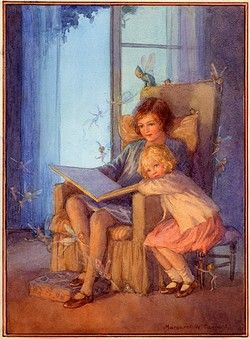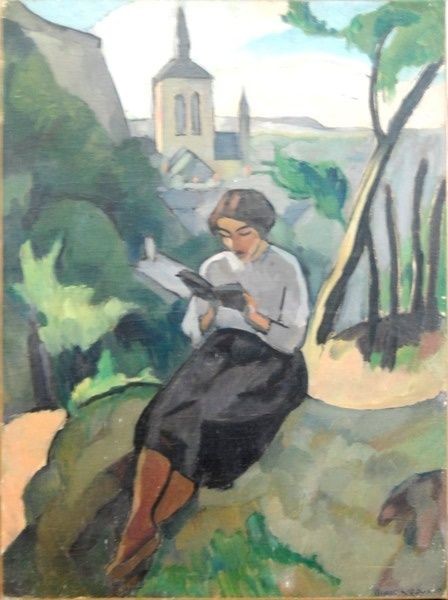Question:
I came across your article Informational Text: Or How Thin Can You Slice the Salami and wanted to reach out to you. I'm analytical and I work with other analytical thinkers. But I am also surrounded by reading specialists, literacy coaches, etc. who think differently. When I visit schools, I observe students who are analytical. They're interested in facts and the world. They prefer expository books to narrative nonfiction or fiction. I'm concerned that young analytical thinkers are being underserved by literacy educators, who are more comfortable with narrative writing.
Shanahan responds:
Your letter came at a very good time.
Recently, I’ve been working in some school districts where the question of how to manage pullout instruction has arisen. Some extra tuition in reading can lead to improved reading achievement for the strugglers, and reading is the elementary skill with the greatest generalizability.
What I mean by the latter is that if a student lacks science knowledge, he can still do well in math; if he lacks math skill, he can still excel in history. But kids who lag in reading tend to struggle across the curriculum—since reading tends to play an important role in content learning. To me, don’t let kids lag in reading. If you have to pull them out of another class for the extra help in reading, it’ll be well worth it in the long run.
And, yet…
Doesn’t pulling kids out of social studies, science, math, music, health, physical education and so on have a damaging cost? Perhaps even to learning to read?
I’m not willing to back off of the idea that an extra dose of reading is needed by some kids, or from the idea that the extra reading class should really be extra. It is not a good idea to pull Janie of Johnnie out of reading class for reading class!
But your letter serves as an important reminder. Kids don’t only learn to read in the reading class. If things are going the right way in social studies or science, there should be a good deal of reading going on there, too (and by that, I don’t mean the tedious round-robin oral reading of such material paragraph-by-paragraph that is so often what masquerades for content instruction or content reading).
Let’s face it, even with the Common Core State Standards or other newer standards that emphasize “informational text” or “expository writing,” there is still nothing like a balance in exposure to such texts.
One of my early mentors and a dear friend was a man named Richard Venezky (an electrical engineer, computational linguist, lexicographer, psychologist, and teacher). Thirty-five years ago—long before the current widespread fascination with informational text—he wrote the following:
“…a separation has developed between literacy instruction in the schools and the literacy needs of the competent citizen. Formal reading instruction today is primarily oriented toward understanding and appreciation of fine literature. Non-fiction materials are treated as unpleasant and boorish intruders into the otherwise serene, romantic kingdom of plot, character, and author’s viewpoint.” (Venezky, 1982, p. 113)
Dick not only decried the lack of inclusion of such materials in reading instruction, but the fact that even when such texts were there the reading instruction was not supportive. In other words, kids might be reading history, but not in a way that would support a vicarious reliving of the past; or they might be reading about other cultures but not in ways that help them to analyze those cultures in ways that would allow them to understand and appreciate another way of life.
Dick tried to explain this odd omission by suggesting a continuation of the Nineteenth Century’s romantic commitment of schools to fostering recreation over work. The idea was to refine children through literature, rather than to coarsen them through science and the like. The idea is that American society—so practical in so many ways—wanted to protect its children from the practical. Children’s libraries, yes; children’s workshops or labs, not so much.
I don’t know, but I like your explanation better… the folks who have been drawn to teaching are just more likely to belong to a Literature Club than to one devoted to the study of snails, sun prints, or tree-ring growth patterns. Reading books—the books we use to teach reading—are sold not to children but to teachers. If most teachers prefer stories or see their role as one of protecting children from those “unpleasant boorish intruders,” then not surprisingly the model reading text will be a literature anthology (no matter the preferences of the kids).
Those anthologies may be punctuated with informational text these days, but a true accounting of the numbers of pages devoted to narrative or information is likely to make those “narrative thinkers” very comfortable. (This imbalance is usually even more marked in schools that teach reading with trade books.)
A quick review of recent research suggests that different kinds of texts include different linguistic affordances and barriers (Bieber & Gray, 2016) and that reading informational text requires different skills and abilities than narrative text (Davis, Huang, & Yi, 2017). If schools are to prepare kids to do the reading of the “competent citizen” they’ll need to provide much more exposure and instruction in such abilities. Unfortunately, despite the increased emphasis on informational text in standards the majority of read-alouds, classroom libraries, instruction, and book recommendation lists continue to be dominated by narrative (Dreher & Kletzein, 2016). Studies also show that reading instruction focused on social studies or science content can be effective in improving reading achievement and content knowledge (Ciullo, Lo, Wanzek, &Reed, 2016; Herbert, Boharty, Nelson, & Brown, 2016).
I’m not backing away from where I started this… some kids do need reading pullouts and those pullouts should not come during reading class. However, can these kids really afford to be pulled out of science on a daily basis?
I’d suggest the following:
- Schools should strive to achieve a much greater balance between the analytical and the narrative within the curriculum. This means using a better mix of texts, but also providing instruction more supportive of expository reading and writing.
- Reading textbooks should greatly increase the numbers of pages (pages, not selections) to content drawn from science, social studies, and the arts. And, a similar restock is called for in book rooms and classroom libraries to offer kids greater balance and opportunity.
- When hiring elementary teachers, principals should pay more attention to the idea of narrative and expository thinking. It would help a lot to have a teaching corps that reflected a wider range of passions and experiences… hire that teacher candidate who hurt her GPA by taking the premedical biology classes, hire the one who has read Faulkner’s entire oeuvre, hire the one who spends weekends volunteering at the local historical society.
- When we decide to pull kids out of content classes for reading interventions (and this practice should be minimized when possible), the plan should include specific strategies for preserving content knowledge. These plans should consider including content texts in the intervention or regular classroom reading instruction. Perhaps mom and dad can guide kids through missed materials or the school to do this can provide audio-guides. Protecting kids from lost science classes may be easier than you think—and it sends a much better message to teachers, students, and parents about what matters.
I think you are correct that individuals tend to lean one way or the other when it comes to narrative and analytical thinking—and to preferences for storybooks or informational ones. I may, however, be less interested in playing to those preferences or motivations. In last week’s New Yorker, Adam Gopnik made the following statement with regard to child-rearing:
“Character may not be malleable, but behavior is. The same parents can raise a dreamy, reflective girl and a driven, competitive one—the job is not to nurse her nature but to help elicit the essential opposite: to help the dreamy one to be a little more driven, the competitive one to be a little more reflective. The one artisanal, teachable thing is outer conduct. You can’t restructure a genome, but, as Mr. Turveydrop, in “Bleak House,” insisted, you really can teach deportment.”
I don’t believe our job is to make the science- or literature-preferers comfortable. I think we do our jobs best when the science kid discovers he can enjoy a story well told or when the math whiz is moved by poetic expression. We are most on our game when Little Miss Literature realizes that she has the chops to pick apart Algebra problems or that she can describe incisively in writing the structure of a cell.
We certainly will never achieve anything like that if our schools stay dedicated to the idea of the children’s garden as a place to be protected from informational text.







Comments
See what others have to say about this topic.